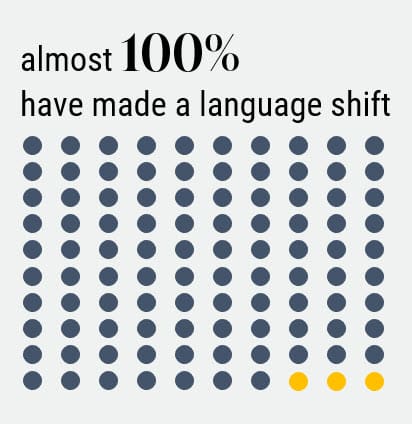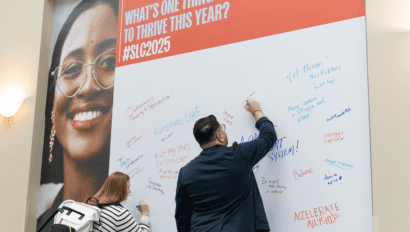Research & Insights
Meeting the Moment: Reframing DEIB and Inclusively Advancing Women in Leadership

Over the past several months, we’ve spoken with dozens of client partners across industries to understand how they’re responding to today’s volatile legal, political, and cultural climate around DEIB—and what it means for efforts to elevate women and other underrepresented talent in leadership. Here’s what we’ve learned, and what we recommend going forward.
What Percentage of Companies Are Rebranding Their DEIB Efforts?
 Nearly all of our client partners, close to 100 percent, have shifted the language they use to describe DEIB work. The most common pivots include moving from explicitly DEIB-branded strategies to broader categories like:
Nearly all of our client partners, close to 100 percent, have shifted the language they use to describe DEIB work. The most common pivots include moving from explicitly DEIB-branded strategies to broader categories like:
- “Culture and Engagement”
- “Employee Experience”
- “Leadership and Organizational Effectiveness”
- “Belonging and Inclusion”
While some companies continue to do the work under new names, others have meaningfully changed their structure, priorities, or resource allocation.
What Are They Moving From and To?
The changes range from surface-level rebranding to deep structural shifts:
- Resource groups have been renamed as “employee networks” or “communities,” with an emphasis on inclusive messaging such as “all are welcome.”
- Metrics and tracking have become highly variable. Some organizations are still measuring representation, advancement, and hiring by identity, but doing so quietly or in legal-approved ways. Others have paused all identity-based data collection due to perceived legal risk.
- Program messaging has been adapted to appeal to broader audiences. Many have shifted from titles like “women’s leadership” or “BIPOC advancement” to themes like “inclusive leadership,” “thriving talent,” or “next-gen leaders.”
Are Companies Still Focused on Advancing Women into Leadership?
The focus on women’s advancement hasn’t disappeared, but it has become quieter.
Many organizations are continuing with executive-level support and selective initiatives. However, most are avoiding bold public commitments, and some are pausing programs entirely while legal teams reassess. Concerns about retaining high-performing women, especially mid-career leaders and caregivers, remain widespread.
Our Recommendations Going Forward
To meet this moment with integrity and impact, we recommend the following:
- Audit and Align Leadership Development
Evaluate current leadership programs to ensure they are building the mindsets and skills needed to navigate and maximize difference—across perspectives, work styles, identities, and lived experiences. These capabilities should be integrated, taught, reinforced, and rewarded. - Continue Measurement, Thoughtfully
Where possible, continue tracking who is applying, being hired, and advancing. Legal counsel may guide how to do this carefully, but eliminating measurement entirely carries its own risks, especially for accountability and long-term progress. - Ensure Culture Supports Caregivers
Strengthen policies and practices that retain women and other underrepresented talent. Flexibility, real-time performance feedback, and fair evaluation systems are key to building equitable environments. - Position Inclusion as a Leadership Imperative
Frame inclusive leadership as essential to business success, not compliance or optics. Skills like perspective-taking, active listening, and navigating difference are no longer optional—they’re core competencies for every leader. - Involve Executives in the Narrative
Cultural commitment is most powerful when modeled from the top. Executive leaders must reinforce values through visible action and lead the narrative about building workplaces that work for everyone.
This is a time of realignment, not retreat. The organizations that will emerge stronger are those that adapt strategically, remain committed to inclusion, and invest in the leadership needed to build cultures of trust, performance, and growth.
Looking to evolve your approach to leadership and inclusion?
We’re partnering with organizations to navigate this moment with clarity and impact. If you’re ready to invest in your talent and build a culture where all leaders can thrive, let’s talk.




